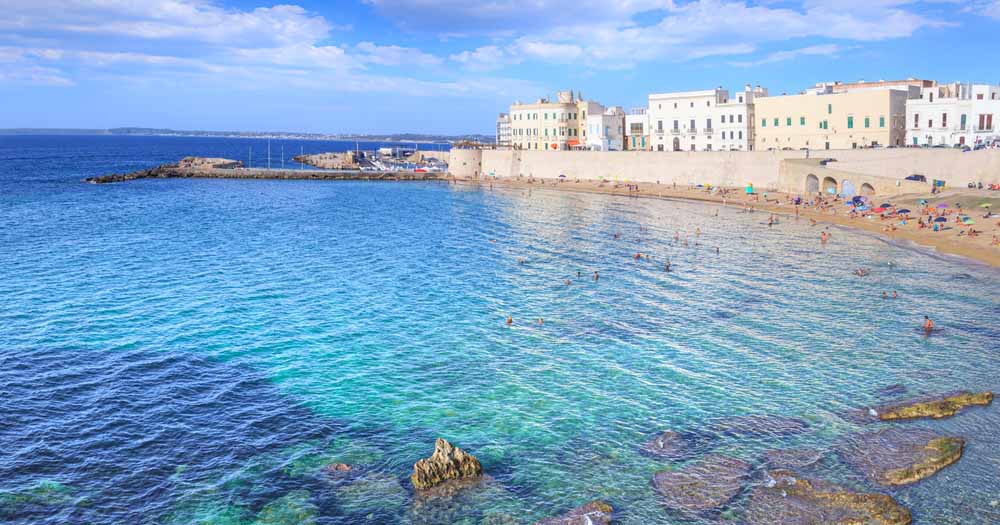
Puglia: A Land Rich in History and Archaelogy
Puglia, located in the heel of the Italian boot, is a fascinating region boasting a unique combination of history, culture, and natural beauty. With its picturesque coasts, historic cities, and breathtaking landscapes, Puglia offers an unforgettable experience to visitors.
Historical and Cultural Heritage
Contents
Regarding the origins of the historical toponym “Apulia,” from which “Puglia” derives, there is uncertainty, and two possible hypotheses exist. The first is that it derives from the ancient population of the Apuli, who inhabited the central-northern part of the region in pre-Roman times. The second hypothesis suggests that “Apulia” would instead derive from “Apluvia,” meaning land without rain.
The history of this amazing region, much like others in southern Italy, is ancient and rich, with traces dating back to prehistoric times. It has been inhabited by various civilizations, including the Messapians, Greeks, Romans, and Byzantines, each of which has left an indelible mark on the territory. The cities of Lecce, Bari, and Taranto, with their well-preserved historic centers, bear witness to the region’s rich cultural heritage.
The colonization of Magna Graecia, peaking in the 4th century BCE, brought advanced governance and settlement to Southern Italy, including Apulia. Rome recognized Apulia’s strategic importance, but its conquest was challenging, culminating in epic battles like the capture of Taranto (272 BCE) and Brindisi (244 BCE). Despite the region’s economic prosperity during the empire’s expansion, marked by the construction of the Appian Way and Trajan’s Via, Puglia faced significant challenges.
After the Western Roman Empire’s collapse, Puglia endured a tumultuous period.
Various peoples, including the Heruli and Ostrogoths, ruled the region until it became part of the Byzantine Empire (6th-11th century). Bari emerged as a key city under Byzantine rule, while Taranto became the capital of its principality in the Terra d’Otranto. The Normans arrived in the 11th century, establishing the County and later the Duchy of Apulia and Calabria in 1043. Puglia flourished under Norman and Hohenstaufen rule, notably during Frederick II’s reign, marked by significant architectural achievements like Castel del Monte in Andria.
Between 1282 and 1442, Puglia was under Angevin rule, part of the Kingdom of Naples, later succeeded by the Aragonese and then the Spanish.
During this period, the influence of landowners grew significantly, becoming virtual rulers with vast powers. After various changes in leadership, Puglia, following the Battle of Bitonto in 1734, transitioned from Habsburg to Bourbon control, affirming the Kingdom’s independence. From 1806 to 1815, French rule modernized Puglia through feudal abolition and judicial reforms, until the return of the Bourbons and the establishment of the Kingdom of the Two Sicilies. Liberal movements emerged in 1820 with the rise of Freemasonry and Carboneria. Finally, in 1861, with the formation of the Kingdom of Italy, Puglia was officially incorporated into the nation.
Its strategic location and fertile land attracted various colonizers throughout history, resulting in a rich cultural, architectural, and culinary heritage. Despite often being subjected to exploitation, each conqueror left behind a legacy that contributes to the region’s fascinating diversity and eclecticism, evident to this day.
Rich in prehistoric artifacts, marked in every era by the passage of man, Puglia is a land waiting to be discovered
Puglia is a true archaeological treasure. Sites such as Egnazia, Canne della Battaglia, and the archaeological park of Siponto offer a fascinating glimpse into the civilizations that thrived in this region. The ancient trulli of Alberobello, declared a UNESCO World Heritage Site, are a unique example of historical architecture.
The history of the early inhabitants of Puglia provides us with a precious testimony: the discovery of an ancient female skeleton, dating back to about 25,000 years ago, in the area of Ostuni. What makes this find extraordinary is the fact that the woman preserved in her womb the remains of a fetus in an advanced stage of development, making her the oldest documented mother in human history.
Numerous graffiti of great historical value, makes Puglia magic
such as those found in the Romanelli Cave in Castro and the Cervi Cave in Porto Badisco. Recently, excavations conducted in Roca Vecchia have revealed an imposing system of fortifications dating back to the Bronze Age, between the 15th and 11th centuries BC.
In the same area, another archaeological site of great importance is located: the cave of Poesia Piccola, discovered by archaeologists in 1983. This cave, with an area of 600 square meters (about the area of a basketball court), features numerous overlapping votive inscriptions, belonging to different epochs and civilizations, dating from the 8th to the 2nd century BC.
Numerous are the megalithic artifacts from prehistoric times, including several menhirs and dolmens
Around the 1st millennium BCE, the territories were settled by the Dauni, Peuceti, and Messapi peoples, likely of Illyrian origin.
Puglia is a region that enchants with its millennia-old history, archaeological wonders, natural beauty, and vibrant traditions. Visiting Puglia means immersing yourself in a journey through time and space, discovering a land rich in timeless charm and beauty.

Leave a Reply